 [Lee Witkin opened his pioneering, eponymous photography gallery at 237 East 60th Street in 1969, the year after I published my first column of photography criticism in the Village Voice. I reviewed the gallery’s first exhibition for the Voice, and covered many subsequent ones for the Voice and the New York Times between then and fall 1974, at which time I left both those platforms and ceased reviewing exhibitions for a number of years.
[Lee Witkin opened his pioneering, eponymous photography gallery at 237 East 60th Street in 1969, the year after I published my first column of photography criticism in the Village Voice. I reviewed the gallery’s first exhibition for the Voice, and covered many subsequent ones for the Voice and the New York Times between then and fall 1974, at which time I left both those platforms and ceased reviewing exhibitions for a number of years.
This interview took place on September 9, 1980. It was conducted at Lee’s apartment on 57th Street, which was within walking distance of his gallery, then located in the Fuller Building at 41 E. 57th. At the time, the Witkin Gallery was the oldest and best-known photography gallery in New York City.
The gallery’s beginnings, and a chronology of its exhibits from 1969-1979, can be found in the book A Ten Year Salute, by Lee Witkin (Addison House, 1979); his specific ideas on the issues of collecting are annotated in The Photograph Collector’s Guide, by Witkin and Barbara London (New York Graphic Society, 1979). Before Witkin died in 1984 he willed the gallery to his long-time collaborator, Evelyne Daitz, who moved it to SoHo and kept it going for years prior to becoming a private dealer. Click here for his New York Times obituary. (For Ms. Daitz’s Times obit, click here. And for good measure here’s a link to the finding aid for the gallery’s archive at the Center for Creative Photography in Tucson, AZ.)
For this interview, I decided to question Lee on matters others than those already covered in these easily accessible sources. He answered with what I think is remarkable candor.
In the less hectic time of the photo scene before the mid-1970s “photo boom,” I would often spend a weekday afternoon at the gallery — making notes on a just-opened show, browsing the selection of photo books, and chatting with Lee, who would spend the quiet times reading Proust. This recorded conversation continued those earlier dialogues, frequently coming back to issues we’d discussed over the years. It ran for more than two hours, and covered a range of topics even broader than this transcript suggests.
I have edited it with an emphasis on issues concerning the Witkin Gallery’s past, present, and future. When short portions of the interview have been deleted, this is indicated by the use of ellipses ( … ); when more extended sections have been cut, I have inserted bullets.
Under the title “Interview: Lee Witkin,” this appeared 40 years ago in the short-lived magazine Photoshow (Vol. 1, no. 4, May 1981). Part 1 appears below; click here for Part 2. — A.D.C.]
•
Interview: Lee Witkin
ADC: If you were starting out now, would you start a photo gallery again?
LW: … What I started out to do was so simple, and so manageable, and so within my grasp and capacity: to have a small little space in which I showed objects that I thought were beautiful and collectible — “beautiful” being a term that embraces ugly but intellectually stimulating, information-giving as well as esthetically beautiful — and that I could open the door every morning at 9 o’clock, open the mail, clear my desk, dust, open the windows, put on the lights, meet the people, answer the phone calls, do the bookkeeping, write the letters, close the door at the end of the day, maybe stay an hour or two late, and go home with a sense of contentment.
But at this stage the gallery is like an enormous, endless monster — it devours all of my time, and there’s no way I can do all of those things I just mentioned without having a bunch of people help me. That in itself triggers a whole new series of problems. …
ADC: What advice would you give yourself if you could speak to the person you were who started the gallery in 1968? What advice would you give yourself that you wish someone had given you at that time — what lessons did you have to learn the hard way?
LW: In all honesty, I don’t believe that — except for the term moderation — there’s much I could have done. I think that if I had kept my operation smaller and more personally under control, I would not feel so scattered and frantic about the thing. But at the same time I’m not so naïve as to not realize that, with the big-timeness of photography, the photographers living, the estates of photographers that had material of value, and the collectors — namely, the moneyed people and the institutions of repute — would almost have demanded that my operation reflect this growth. Everything that’s happened to me has happened in accordance with what everybody expected and wanted.
I could not show a major photographer if my operation were not up to par. They’d go — and they have been going — to bigger galleries, galleries that are more famous, that have more power. If I were a photographer myself, and wanted to do right by — suddenly — the world’s attention, I would want a place that was handsome enough, big enough, and well-run enough to mount a first-rate show. So there I am — stuck, as I was all the time.
I didn’t make these decisions in total ignorance; I just didn’t understand how hard it was going to be to grow. I knew I had to grow; I knew, if I didn’t grow, what would happen. But then if I hadn’t grown, I’d probably be sitting here crying about the fact that I hadn’t grown. And again, I don’t think it’s negative — I really don’t believe it’s negative. It’s just examining the real angst, the real problems and disappointments of what you could term success and gaining a big operation. I don’t wish to be negative about it all; but I don’t wish to cover it up.
I mean, I could say, “Gee, it’s great, man, and I’ve made it,” all that; a lot of people do that, and then they go and they blow their brains out, or they get drunk. That’s a lot of the trouble with the world: people will not admit that once having achieved what they felt and feel is success, they’re fucking miserable a good deal of the time. I’m willing to at least say that, and try to understand that it’s not only my own failing, but I really think it’s a failing of not only the society we live in but perhaps the very nature of life itself as we perceive it and live it.
•
LW: … Yes, I think that’s the greatest thing I could do with the gallery, to help this man [Wendell MacRae, who was then showing at the gallery] gain his rightful place in the history of photography, and to see his work go into a good home. And that’s what I’m doing, and that’s what I find the greatest pleasure in doing. But once that’s done, I go on to the next thing — my responsibility ends with that act. …
ADC: One recurring thread that I see going through the history of the gallery is a kind of attention on the gallery’s part to older photographers who have not gotten the recognition that they really deserve. Marion Palfi’s an example of that, and I could name a dozen others. … That in turn, I think, has created a kind of balance in the gallery whereby a number of people see you as less interested in the work of younger photographers, “up-and-coming” photographers. … Do you feeI that’s an accurate characterization of the gallery? Do you feel that’s an imbalance, and do you regret it if it is?
LW: No; in fact, I think it’s totally — if anything — a balance rather than an imbalance. It’s true that we’ve given shows at the end of their lives to people like Elli Marcus, Marion Palfi; people who are still alive, like Anton Bruehl; Margrethe Mather, of course, who was long dead … but if you look at the list of shows we’ve had, we’ve given first shows to many young people.
People forget that when the gallery showed Judy Dater and Jack Welpott in ’69, Les Krims, they hadn’t been shown before. Last year’s opening show was “Nine Contemporary Photographers,” all of whom were showing for the first time in New York City. So that really isn’t true. It is a balance. It’s a balance of people — like Edmund Teske — who are alive and working, who have never been shown. We’ve shown Edmund two or three times — not that I’ve been able to convince museums and collectors that he’s an important photographer, but I believe he is, and I continue to try, to show him.
For every dead or dying photographer, we’ve shown a young photographer, and for every one of those we’ve shown someone in the middle stage. So if you look back on the record — it’s listed in the Ten Year Salute, every show we’ve had — I think you’ll find a balance, not an imbalance.
The trouble is, the voice of the very young is the loudest, and they’re the most impatient, and they want everything now. … So that’s a misreading of the gallery’s history. … A few years into the gallery someone said to me, “My, you’re showing women.” Well, I was showing Marion [Palfi], and Laura Gilpin and Barbara Morgan and Imogen [Cunningham] and Judy [Dater], but it had never occurred to me that they were women as opposed to men — they were just really good photographers. And it never occurs to me that I’m showing someone who’s twenty-five or forty-five or eighty-five. I’m really showing good work, and I don’t care if it was done yesterday, or twenty years ago, or eighty years ago, or a hundred years ago. Those are just words. What we’re talking about is a body of work that can be viewed and experienced, and what the hell difference does it make?
It’s true young people feel that if they don’t make it this year they’re finished, but Imogen was in her eighties and she was selling her prints for $15. … So I think the voice of the young people today is like all voices of young people today — based on an immaturity and an impatience — and it has to be taken with “moderation,” that greatest guide of all.
ADC: How much work comes through the gallery in, let’s say, a month’s time? How many portfolios?
LW: Well, we’ve had to stop that a good deal, because of the abuse.
People see only one side of it. The photographer, with a portfolio, sees himself; he doesn’t see that he’s multiplied by hundreds. And the gallery is not a museum — I don’t receive any funding or grants. Everything that makes that gallery tick is capitalistic; it’s money that’s earned by selling. So, therefore, my first responsibility is to pay my staff, pay the rent and the telephone bill and the printing bill and the taxes and the insurance and all the expenses — that are fantastic — of running a gallery. And that means that my major efforts have to be made toward running it as a business. Not that I run it entirely as a business, because I care in a very esthetic way about what I’m doing. But I have to be practical.
And there came a point at which, if I were to look at every portfolio or have my staff look at every portfolio, I could not proceed with the running of the gallery. Plus, everyone who showed you a portfolio, or almost everyone, felt that he was the hottest thing to walk through the door, and that he should have a show and a book as quickly as you could arrange it.
Now, to try to tell someone like that that the work was good/mediocre/lousy, and 99 times out of 100 intensely derivative, became an emotionally charged experience that exhausted me and, instead of getting me and my staff thanks, got us incredible abuse. I had to put a stop to that, or at least I had to moderate it to some degree. We do look at work, when we’re able to; we ask that it be accompanied by a recommendation from someone in the field. … I’ve also found that good work does not walk through the door. I have found most of the good work through traveling, through books and other shows. I have gone to the work; very seldom has someone come in with work that I have eventually made into a show. …
•
ADC: There’s recently been formed a society of gallery dealers/owners/proprietors [the Association of International Photography Art Dealers, or AIPAD] —
LW: I knew you were going to ask me about that — I’m psychic! Yes?
ADC: I’d like to ask you a two-part question: one, what specifically do you think of that organization so far; and two … if you were going to be writing a code for the galleries in photography based on your experience, what would be the primary tenets of that?
LW: Personal integrity. I don’t believe in groups. I don’t know much about this group. I’ve always sent Courtia [Worth], and then Bruce [Cratsley].
ADC: Are you a member?
LW: We are. I didn’t want to be a member. I was a member only because I felt the act of not being a member would be misconstrued.
![]() I think when people have to get together to set up a code of ethics, it smells. … I believe that a group of people is more quickly corrupted than an individual. And I believe that organizations like [the American Art Association], although they may indeed do some good, are basically used for self-gain by the individuals in them.
I think when people have to get together to set up a code of ethics, it smells. … I believe that a group of people is more quickly corrupted than an individual. And I believe that organizations like [the American Art Association], although they may indeed do some good, are basically used for self-gain by the individuals in them.
I also am not a joiner, and I’m not a committee person. … I like to do things quickly, the way I see they should be done, and get them done, and get on to the next thing. I don’t like sitting around bullshitting, talking about how things are done, and compromising in a way I don’t feel I should compromise. Since the gallery was mine to begin with, I was free to do that. Jain Kelly [of his staff] somewhere along the line said — when I had a conflict with an employee — that he was process-oriented and I was result-oriented. One could say that. …
I’m not a politician. I’m apolitical. When I look at the world of politics around me, I cringe. … I’m forty-five years old. I’ve worked for twelve years, I’ve worked my ass off. It seems to me that if I don’t want to belong to an association, I should have the right not to belong to an association without having to be labelled a bastard, or a difficult person, or a snob. … I don’t want to be antisocial, but I don’t see why I should be forced into a sociability that is against my nature, takes away from my effectiveness in my own business, and that I’m not happy with. …
It seems to me that my ethics are my ethics, and if you’re unethical, a group of people sitting around drawing up a code of ethics isn’t going to make you ethical — you’re just going to work around them. … Ethics begin with the individual who wishes to exercise ethics, and no code of ethics that’s drawn up is going to work if individuals don’t wish it to.
… Some good things may come of [the photo dealers’ association.] The only thing that Cusie [Marcuse] Pfeiffer told me that seemed attractive was that there were group insurance rates! (Laughs)
ADC: Medical insurance rates?
 LW: Yes! That’s the only thing I thought was good about it. See, I’m afraid what’s happened is that over the years I’ve found that I have alienated a lot of people. And I feel badly about that, but I don’t see the alternatives. If you want to do things your way, and not other people’s way, you alienate people. … Someone could say to me, “Well, then, why don’t you have enough faith in a committee of photography dealers that will work?” Well, I just don’t. Because I know the people who are in there; and I’ve known most of those people for a long time who are involved in that. I knew them when they were starting out. And most of them aren’t the kind of people that I would want to draw my wagon up with. I’d rather take my wagon out in the desert and chance the Indians. …
LW: Yes! That’s the only thing I thought was good about it. See, I’m afraid what’s happened is that over the years I’ve found that I have alienated a lot of people. And I feel badly about that, but I don’t see the alternatives. If you want to do things your way, and not other people’s way, you alienate people. … Someone could say to me, “Well, then, why don’t you have enough faith in a committee of photography dealers that will work?” Well, I just don’t. Because I know the people who are in there; and I’ve known most of those people for a long time who are involved in that. I knew them when they were starting out. And most of them aren’t the kind of people that I would want to draw my wagon up with. I’d rather take my wagon out in the desert and chance the Indians. …
•
This post supported in part by a donation from the VASA Project.
•
 Special offer: If you want me to either continue pursuing a particular subject or give you a break and (for one post) write on a topic — my choice — other than the current main story, make a donation of $50 via the PayPal widget below, indicating your preference in a note accompanying your donation. I’ll credit you as that new post’s sponsor, and link to a website of your choosing.
Special offer: If you want me to either continue pursuing a particular subject or give you a break and (for one post) write on a topic — my choice — other than the current main story, make a donation of $50 via the PayPal widget below, indicating your preference in a note accompanying your donation. I’ll credit you as that new post’s sponsor, and link to a website of your choosing.
And, as a bonus, I’ll send you a signed copy of my new book, poetic license / poetic justice — published under my full name, Allan Douglass Coleman, which I use for my creative writing.

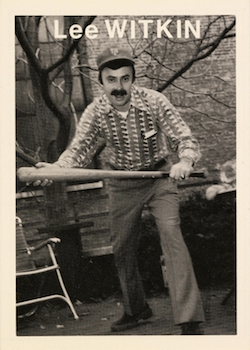
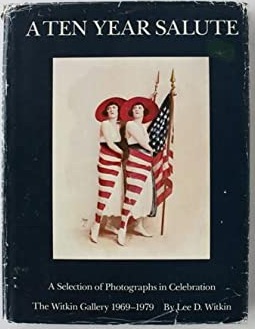
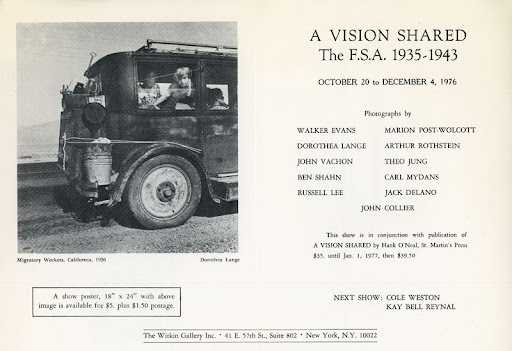
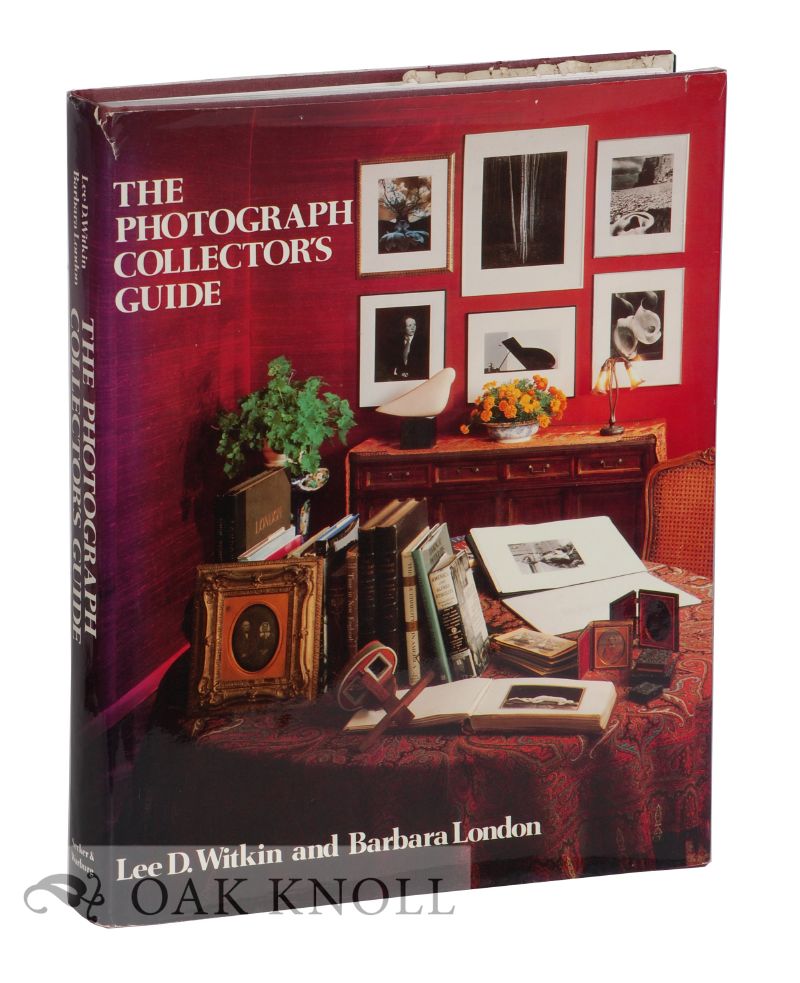
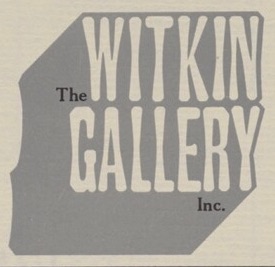




Hi, Alan, A treat to read, and informative- very good, nuanced questions. I never knew Lee much beyond hello, so I appreciate this opportunity for acquaintance from a distance. He expresses values that at the time I assumed were widespread in the gallery world; names like Tennyson Schad, Harold Jones, Larry Miller are among many who come to mind. Look forward to reading more about Lee.
Best,
David
I think that, with the first generation of commercial photo galleries and gallerists, the medium got what it deserved, in the very best sense — people who loved the medium, and had in many cases studied it in school and practiced it themselves (e.g., Jones, Miller, Howard Greenberg).
Even though they worked in the for-profit end of the medium’s emerging infrastructure, they were not all about the money, by any means. They preserved huge amounts of important material that might otherwise have gotten discarded. They educated the first several generations of photo collectors. They provided platforms for public presentation of the work of the entire spectrum of photographers, from the medium’s invention up through the present. They generated income for photographers and their estates.
As much as anyone in the field they made photography respectable, and collectable, and museum-worthy.
Speaking personally, in my professional role they provided a wealth of raw material, historical and current, for critical assessment.
There may been a scoundrel or two among them, certainly several a-holes, but collectively that cohort has always had my highest respect. I consider the medium and its practitioners lucky to have had such devoted and knowledgeable merchants to handle its material culture.
Are the audio recordings of these interviews online?
No. If they were, I’d have noted that in the post and provided links to them.